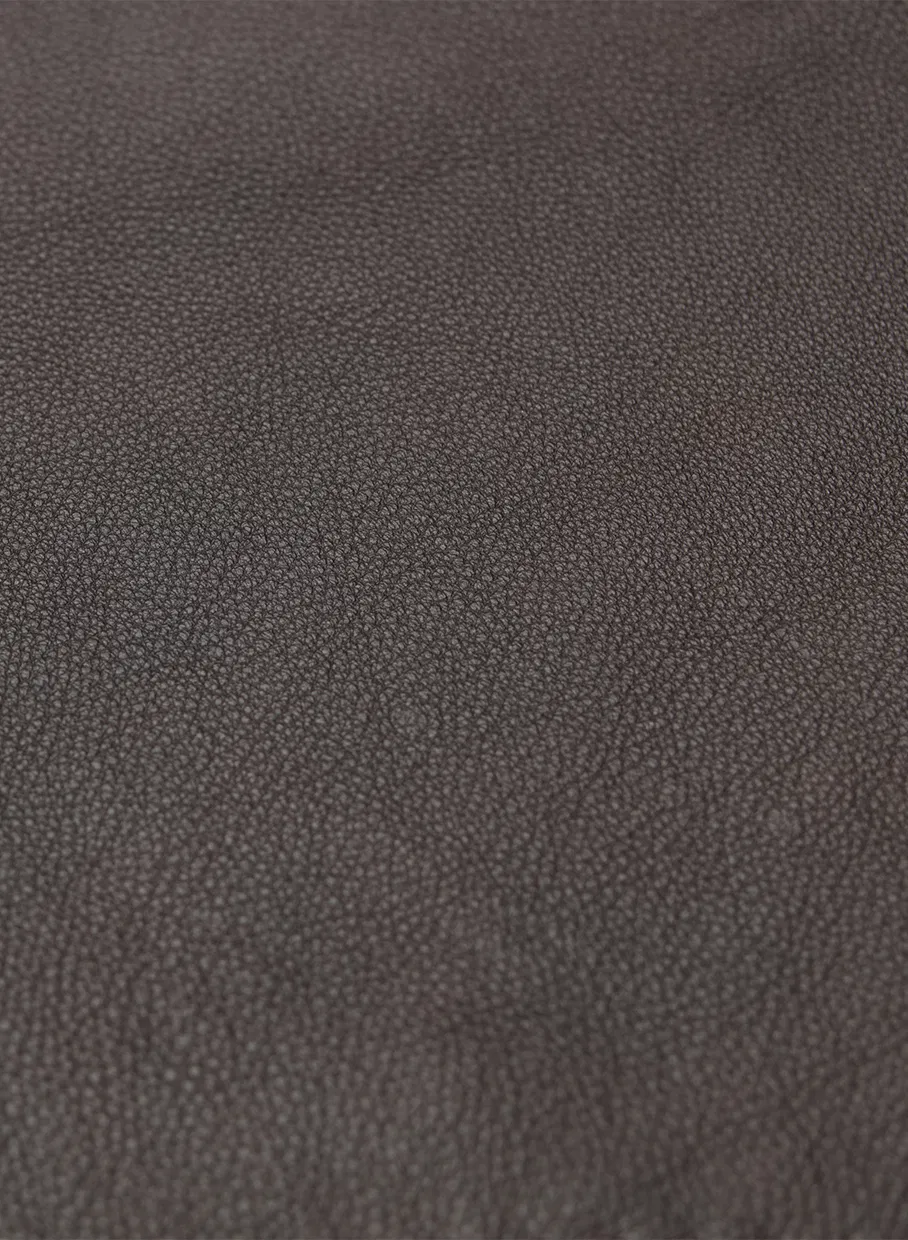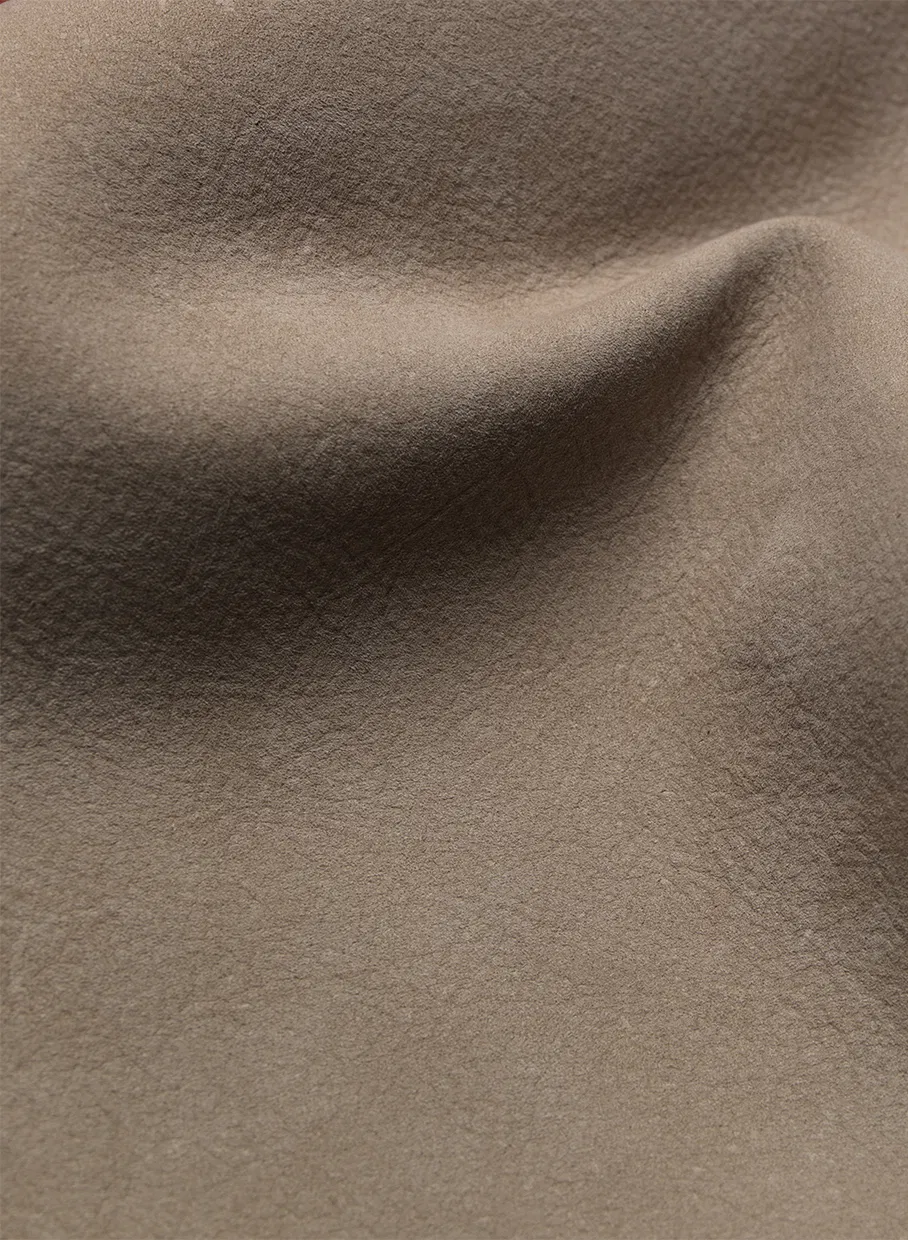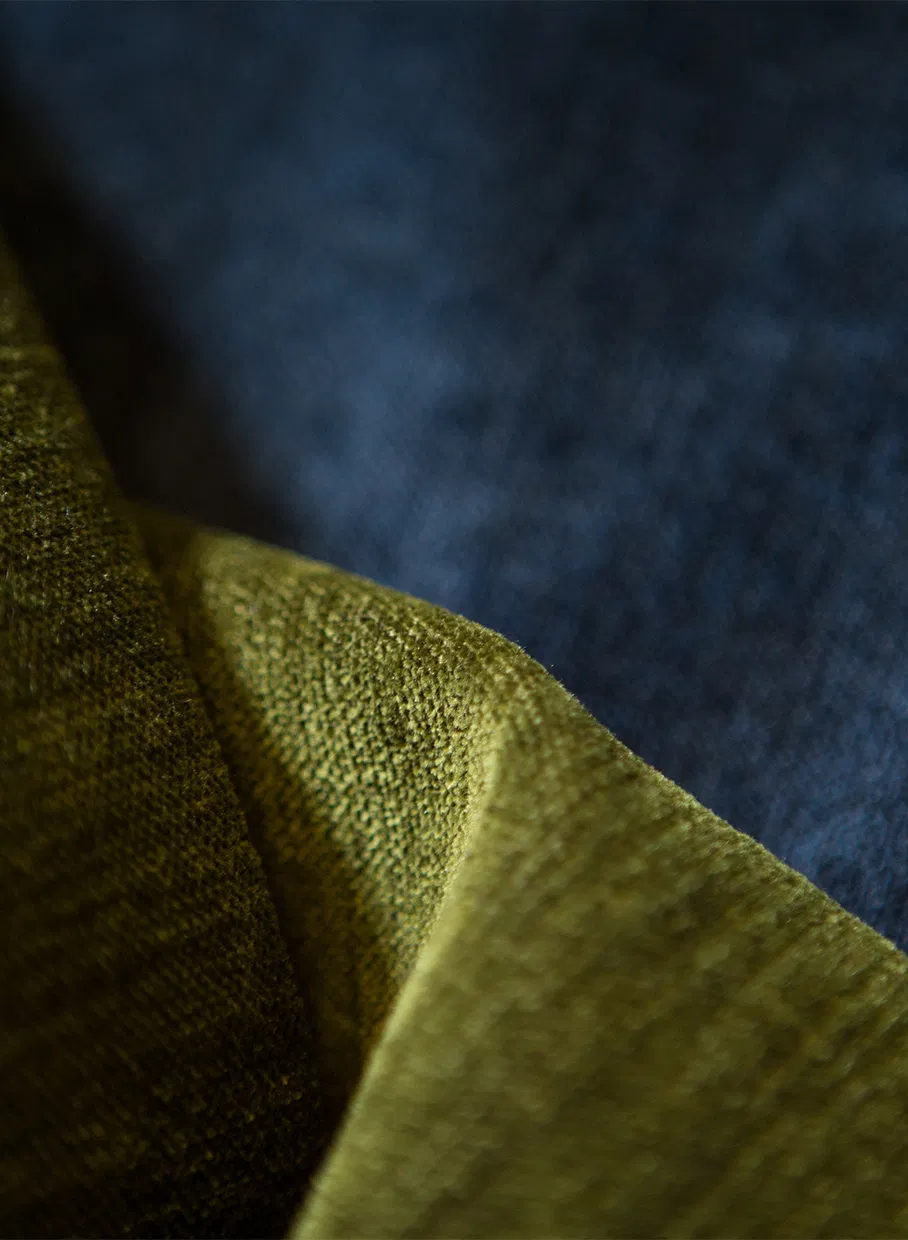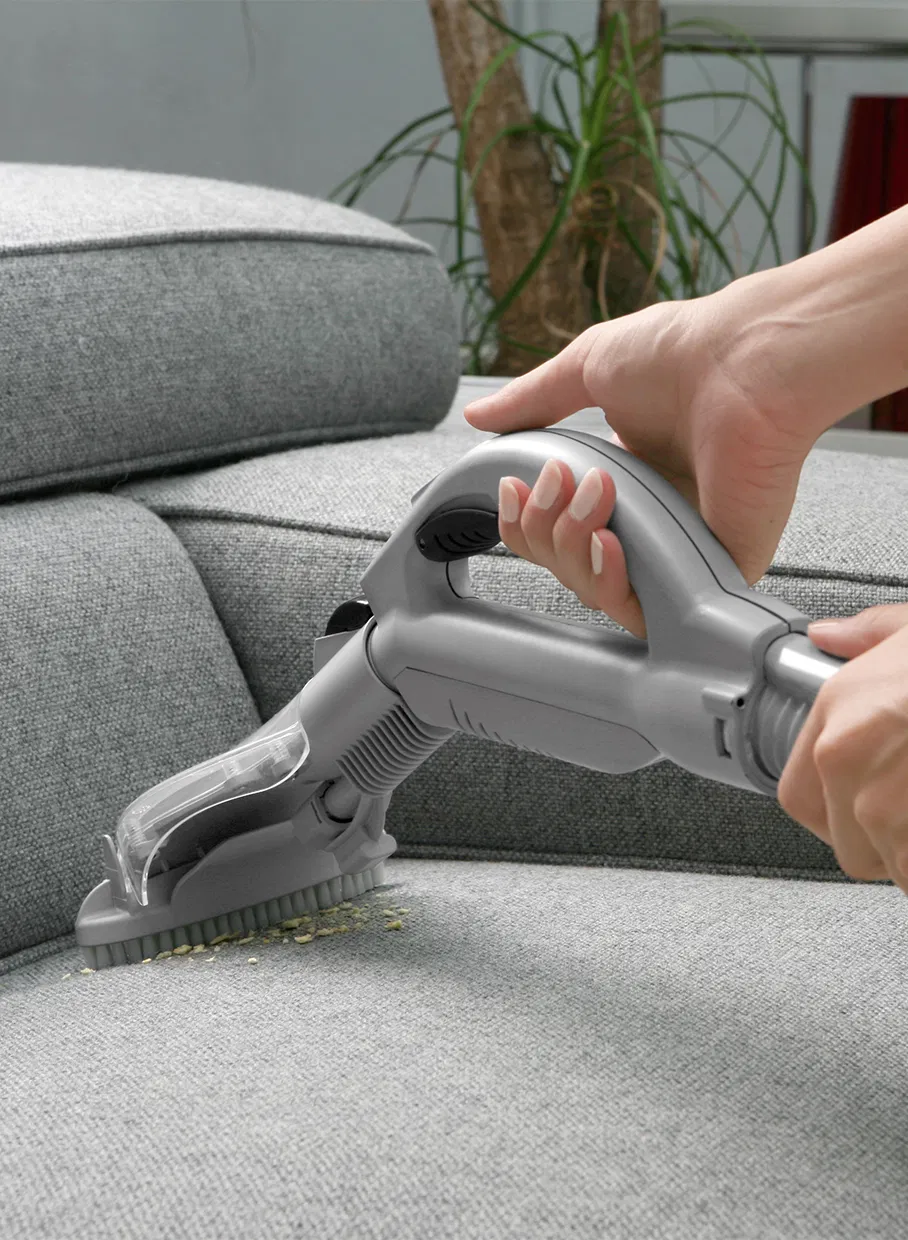About our Leathers
Our leathers are made from carefully selected pure natural products that vary in appearance in much the same way that wood and marble vary in appearance. This in turn means that all leather is unique, which helps to tell the history of the material. A leather's variations are not defects but should be seen as a sign that it is genuine leather – its individual character is what distinguishes it from artificial leather.
All our leather complies with the REACH regulation and our high quality standards. We want to ensure that each leather has undergone extensive review for its minimal environmental impact as well as its manufacturing and assurance that it does not contain any harmful chemicals. Our leather comes from 6 different tanneries in Europe - mainly from Italy.

Anilin
Aniline leather is a premium leather. Pure aniline is treated with transparent, soluble dyes that preserve the skin's natural surface so that all the animal's pores, scars and marks remain visible. This is the most genuine and luxurious leather money can buy. Soft and supple to the touch, it has a rustic, textured look and each skin is unique, like a fingerprint. Over time, aniline leather develops the rich patina desired by leather connoisseurs. Unlike most other materials, this leather only improves with age. That said, patina can be an advantage or a disadvantage, depending on what you're after. The minimal treatment of this leather makes it more prone to stains and scratches, and it normally needs more care than other types of leather. Only 5% of all leather on the market today is suitable for aniline leather. If you want your leather to age beautifully, it needs to be treated with leather care products designed for it. This should be done about 3 or 4 times a year.
Semi aniline
Semi-aniline leather is an aniline leather that has been dyed through and has been treated with an extra protective layer to increase its resistance to stains. The natural marks found on an aniline leather can in some cases also be found on a semi-aniline leather. This leather is generally comfortable and offers good breathability. Semi-aniline leather is less cold in winter, less sticky in summer and more resistant to stains and scratches. This makes it more user-friendly than true aniline and more suitable for households with pets and children.

Nubuck
Nubuck is a lightly sanded, through-dyed aniline leather with open pores. Nubuck is a living leather that breathes and absorbs moisture, liquids and natural fats. The appearance can vary from skin to skin, with variation in texture and color and marks from, for example, insect bites, scars and scratches. These variations are characteristic of genuine leather, proving that the leather is genuine. The leather acquires its own character and patina through use, making it more beautiful as it ages. Our nubuck is treated to make it more resistant to spills and stains. This lasts about 2 years depending on use.
Corrected leather
Corrected leather is leather made from the top layer of the skin, where the outer layer has been sanded away. This is done to remove various marks such as insect bites, barbed wire cuts, scratches and other blemishes. The skin is sanded or polished before a protective coating is applied and an artificial texture is embossed into the surface. This type of leather is the most common across the board in terms of pattern and color. It has a less natural appearance than aniline or semi-aniline, but is highly resistant to spills and scratches and therefore requires less maintenance than other types of leather. It fits, for example, sofas for families with children.
What happens at the tannery

Tanning
This process, which takes about 48 hours, makes the skins stable and easy to handle. The skins take on a grey-blue colour.
Sorting
Final inspection of the grained leather is done manually. The leather is sorted according to grain damage: the finest hides with the least damage are turned into aniline or semianiline. Only 5% of the hides are transformed into exclusive aniline leather. Note that a semianiline leather may only be called semianiline if the grain is untouched. The leather is called corrected leather if the grain is ground before dyeing. Hides with many marks are sanded and corrected and transformed into a standard leather, which has an embossed pattern and no open pores at all – a corrected leather, but still a grainy leather.
Through staining
All skins are dyed through, giving them their final base color.
Drying
The hides are stretched and dried in different ways depending on what they are to be made into.
Testing
Testing of the final product is very important to determine the durability, flame resistance, light fastness, dry rub, wet rub, sweat rub, surface adhesion, tear strength and thickness of the leather. All these aspects are tested on each batch of finished leather. It takes about 4 to 6 weeks to get from rawhide to finished leather.



